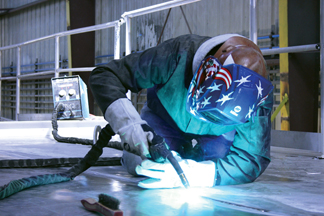How to Prevent Wire Feeding Problems When MIG Welding Aluminum
From automotive manufacturing to ship building and trailer fabrication, aluminum continues to be an increasingly popular material — due mainly to its high strength-to-weight ratio and its corrosion resistance. The material allows these industries to produce products that weigh less but are capable of withstanding demanding use. For automotive applications, specifically, aluminum helps provide emission improvements and fuel savings to new vehicles.
Despite its benefits, aluminum can be challenging to weld. Due to its inherent oxide, high thermal conductivity and fast cooling rate, it requires better cleaning methods and slightly different welding techniques than welding steel to achieve a sound weld.
The welding wire also poses potential issues, as it is much softer than steel wire and can be easily deformed or crushed. In MIG welding aluminum applications, that means that the chance for wire feeding problems is greater. This is particularly true when welding with the 4000 series wires like 4043, 4943 and 4047. These wires offer the advantage of better wetability and bead appearance but are more prone to feeding problems within the welding gun liner since they have less columnar strength than other aluminum alloys or steel wires.
Fortunately, there are some key steps you can take to minimize wire feeding problems and the downtime associated with them.
This article was published in The Welder. To read the full article, click here.



